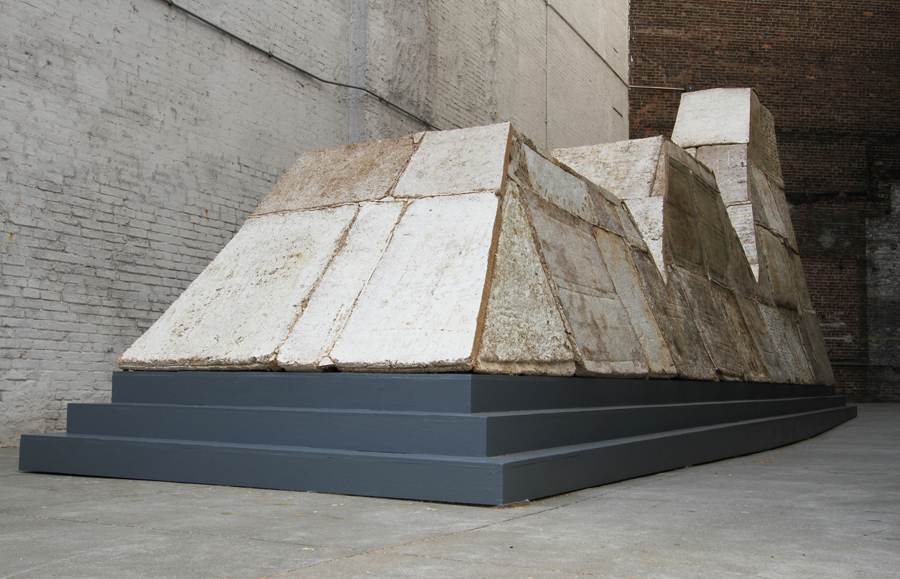Timothy Hull’s Brooklyn is in Ruins

August is generally the month New Yorkers think about escaping the city to some exotic locale. But what if it turned out that an exotic ruin had appeared along a rugged stretch of downtown Brooklyn real estate? Commissioned by the Brooklyn Academy of Music, The Accelerated Ruin is a monumental sculpture by New York artist Timothy Hull and Future Expansion Architects.
Drawing inspiration from Egyptian ruins (and the Mayans, Sumerians, and Austronesians, for that matter), Hull and co. created a contemporary relic, designed to organically decay over the course of its yearlong public display. “We really wanted to play with the idea of a what it means to create a building or a sculpture with the intention of ruination,” Hull says about the collaboration. “It’s not something artists or architects ever have the luxury of considering: there is always the struggle for permanency and this liberated us from that.”
Slowly degrading over the course of a year, Hull’s deliberately obsolescent construction stands in contrast to the ongoing redevelopment of the area. What was once a local economy predicated on weed shops and dancehall mixtape stalls has evolved to include fancy French restaurants. “This neighborhood of downtown Brooklyn is in a true state of flux, somewhere between ruin and destruction and gentrification and construction,” he says. “So, the piece inadvertently becomes some sort of a mirror against which the changes of the neighborhood can be measured.” (Plus, it looks a lot better than the Brooklyn Nets basketball arena.)
Though the structure bears the massive weight and presence of carved stone, Hull says, “We chose a new and innovative material called Ecovative that is manufactured in upstate New York. Ecovative is completely organic, which attracted us when we were thinking about decay, [and it] is created by the fusion of hemp and mushroom roots, and becomes this living substance that is rather durable yet remarkably biodegradable.”
Hanging out in one of those old smoke shops might also clue casual visitors into Hull’s stoney inspirations for the sculpture, “I was inspired by Mesopotamian Ziggurats, stepped pyramids of all sorts, the wailing wall,” he says, “And perhaps oddly but not surprisingly, Indiana Jones and Raiders of the Lost Ark.” If you build it, they will come.






